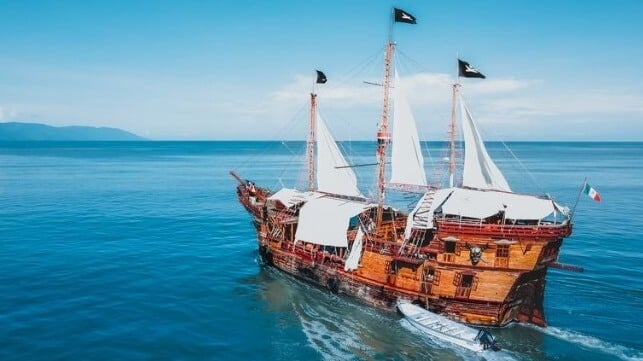Nurdles are small plastic pellets used to make almost all our plastic products, and all it takes is one container loss to release potentially billions of these microplastics into our oceans and wreak havoc on marine ecosystems. While progress has been made, regulations do not match up to the scale of the environmental problem, writes Emma Forbes-Gearey, loss prevention officer at West P&I.
To give you an idea of the scale of the plastic pollution problem, plastic production surged from 5m tonnes in the 1960s to 460m by 2019; the Environmental Investigation Agency has warned that by 2050, there could be more plastic than fish in our oceans; the Fidra Project has estimated that 445,970 tonnes of nurdles, the equivalent to 29bn plastic bottles, escape from stages in the plastics supply chain into the environment every year.
As reported by the National Oceanic and Atmospheric Administration, a plastic bottle may take up to 450 years to decompose, while a fishing line could last for 600 years. Most plastics are non-biodegradable and can endure for decades. Over time, these plastics fragment into tiny particles known as microplastics (less than 5 mm), which are readily consumed by marine life.
A strong argument can be made that plastic nurdles leaking into the environment are potentially worse than an oil spill. In the rare occurrence of an oil spill, most of it can be cleared away by either specialised equipment, dispersants, biological agents or via nature alone. Whereas when plastic pellets enter the marine environment, they could end up globally anywhere depending on currents making recovery at sea very difficult. Most of the recovery can only be done when they hit land, however over time they get buried in beaches, which makes recovering every last nurdle impossible.
By 2050, there could be more plastic than fish in our oceans
This was the case with the X-Press Pearl disaster in 2021. Following the fire and subsequent sinking of the ship, plastic pellets were found in the bellies and gills of local fish and washed up on Sri Lankan beaches as far as the eye could see. This is not the only case of nurdles spilled from containers. In 2017, approximately 2.25bn nurdles spilled from a moored ship in Durban, South Africa. It was reported in various news outlets that these nurdles travelled as far as the southwest coast of Western Australia.Many plastics also float and drift with the prevailing currents and winds, accumulating to form huge islands of floating plastic like the so-called Great Pacific Garbage Patch – which is roughly 4.5 times the size of Germany and this is only the tip of the plastic iceberg. The UN Environment Program estimates that only 15% of marine litter floats on the sea surface, another 15% stays in the water column, and the rest remains on the seabed.
The real scale of the plastic pellet pollution problem may even be unknown. Nurdles, which are carried in containers, may not necessarily spill in one major documented incident as is the case with oil spills. Presently, container losses don’t have to be reported unless they contain a pollutant, hazardous goods or represent a danger to navigation.
While it is a byproduct of oil production, plastic does contain toxic chemicals although it is not toxic to the human touch and is therefore not defined as a hazardous good. However, plastic is hazardous to marine life if consumed. It also remains to be seen how harmful its consumption is to humans if, and when, it enters the human food chain.
Only 15% of marine litter floats on the sea surface
There is slightly more positive news however, the International Maritime Organization has agreed on draft recommendations for transporting plastic pellets on ships. These considerations were submitted to the Marine Environment Protection Committee for approval in their next meeting.Plus, by 2026, vessels will have to report container losses regardless of whether they’re hazardous goods. Unfortunately, it will still not be mandatory to report what is in the containers unless it is transporting dangerous goods, meaning quantifying the plastic pollution problem remains a challenge.
In March 2022, the UN Environment Assembly also came together to create new international legislation that would be legally binding on plastic pollution, with sections focusing on the marine environment. The completion date for the treaty negotiations should be December 2024, although details regarding the final contents are unknown.
While progress is being made, the pace of regulatory change needs to ramp up. It took approximately 50-60 years to get to where we are now in terms of equipment, procedures, and reporting for oil spills. Plastic regulations do cover many key bases, however, monitoring their implementation and effectively enforcing them presents major challenges.
The plastic pellet pollution problem
Typography
- Smaller Small Medium Big Bigger
- Default Helvetica Segoe Georgia Times
- Reading Mode









